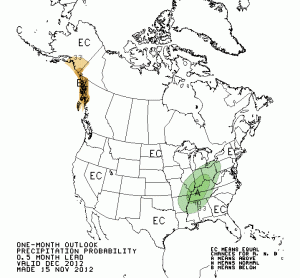
Winter forage crops are sitting inactive due to our dry fall, but December may bring much needed moisture.
Showers began in April for Florida’s growers in the Big Bend region. With the exception of Tropical Storm Debbie, the showers were steady, and if not generous, they were ample.
Early autumn saw the frequency of showers slowdown and the rain amounts dwindle. It was great hay cutting weather and easy to get machinery over fields to harvest.
Unfortunately, the dry trend has continued and is now to the point of retarding growth of winter forage. Dryland fields of ryegrass, rye, oats and others forages are sitting inactive. Worse, in a few cases where a shower occured, there was enough moisture to germinate the seed. The following weeks without moisture killed the seed.
The National Weather Service is calling for a “normal” December, which should deliver five inches to most producers. This will help overcome the deficiency of 2.9 inches and 3.9 inches that did not fall in October and November respectively.

The National Weather Service is calling for “normal” rainfall amounts for December 2012, which should bring five inches to most producers.
- The Federal Reserve’s Beige Book Outlook for the Near Future - August 9, 2019
- Creeping Indigo: Get Ahead of the Problem Now - March 1, 2019
- Horse Hooves Need Extra Care in Wet Pastures - February 15, 2019
